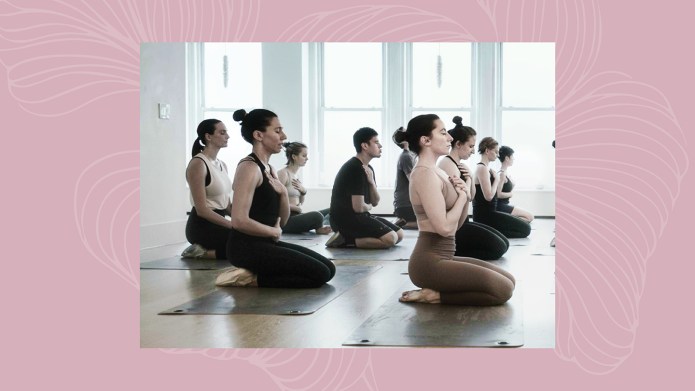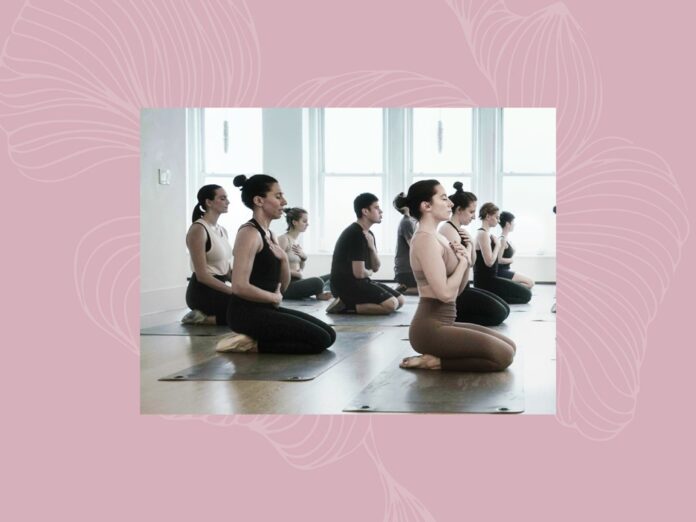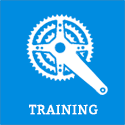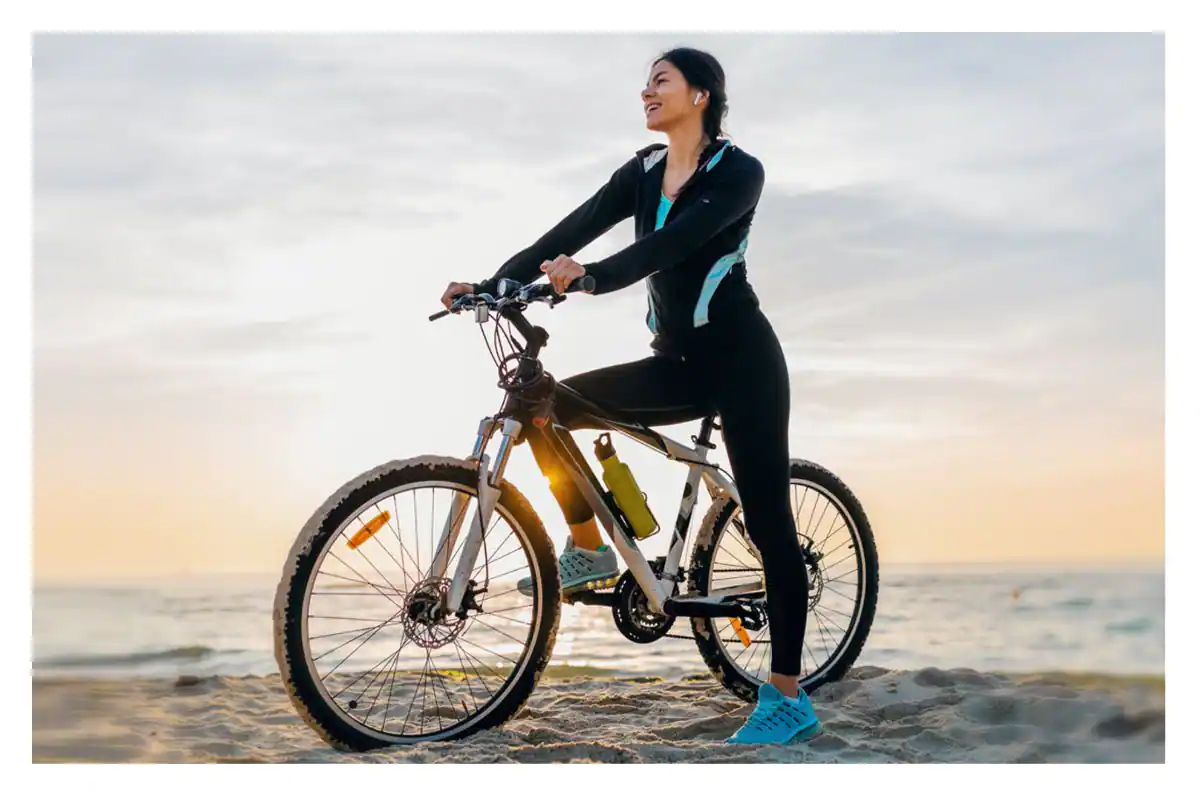
picture:Courtesy of The Class / Design: Jennifer Ciminello
I had heard that physical exercise could be helpful in “this period of life” but honestly, I didn’t even know what “physical” meant. Natalie Kuhn, co-CEO and founding teacher at The Class, filled me in.
In my 20s and 30s, I was doing cardio regularly along with yoga, and I was definitely doing yoga more for the flexibility and stretching than the meditation part. My practice changed, such as it was, during my 40s, and now in my 50s, I’m one of those people who consider walking an exercise. (My primary care doctor disagrees, saying that long walks count as “movement” unless I get my heart rate up.) Anyway, as I get over menopausal symptoms that can last a decade like hot flashes and night sweats, I’m looking for new exercises that will help.
I had heard about physical exercise from a friend but didn’t know what it was or if it was something I wanted to do. A quick search showed that somatic therapy combines the mind and body, which seemed promising and similar to yoga. But for a real explanation, I turned to Natalie Kuhn, co-CEO and founding teacher at The Class, which offers physical exercise via an online studio open to everyone as well as in-person classes in New York City and Los Angeles.
“Let’s start with the word itself,” Kuhn said. “It is derived from the Greek word ‘soma’ which means body, or more poetically, the body in its perfection. When people use the term ‘somatic practices’ they are referring to a variety of techniques that bring awareness to your body.
What is physical exercise?
Physical exercise involves focus and awareness of both body and mind. When someone starts talking about being more present in their thoughts and feelings, ironically my Midwestern self begins to validate it. There’s only so much talking I can take. But Cohen reassured me that I probably already did the physical exercise.
“You may already be engaging in somatic practices without even realizing it,” Kuhn told me. “Have you ever wiggled your toes in your shoes and become aware of the feel of your socks? Or rubbed your hands together and noticed the heat they generate? Have you ever laid in bed just before waking up in the morning and noticed liveliness or dullness in your body? All of these are moments of body awareness It’s not as wild and remote as you might think.
“In The Class, we use a variety of movements, some of which resemble traditional fitness, and some of which borrow from ancient physical practices such as Qi Gong, to tap into the mind-body connection,” Cohen said. The sessions are music-based, as Spin classes might be, and mat-based, as yoga classes might be.
What happens in a physical exercise class?
So what does physical exercise look like in the classroom? Here’s an example: “A teacher in The Class might instruct you to tap your heel to the beat of the music. Not too crazy, right? That moment isn’t that important and it’s not at all embarrassing, but it has a big impact,” said Conn. Grounding sends sensation through your joints and helps your brain locate your body.”
This makes me laugh, but I understand what you mean. Postmenopausal brain fog is a real thing, and it becomes even more pronounced because of how busy we are in our premenopausal and menopausal years: work, raising children, and caring for older relatives all conflict. “Most of the time, we are so stuck in our heads, in our repetitive or annoying thoughts, that we forget that thing under our neck, called the body,” Cohen said. “Getting back into the body brings us back to our full sense of being human. Small exercises that we call somatic practices can To help us reach what we want without putting in much effort or pressure.
You may hear about physical exercises to relieve trauma, but these are incidental benefits
My friend who first told me about physical exercise was using EMDR (Eye Movement Desensitization and Reprocessing) with her therapist. This form of physical practice is different from “separation,” Kuhn said. EMDR is a therapeutic technique performed by a trained professional and is not a teacher-led physical exercise to increase body awareness.
However, physical exercise can also be used for emotional healing, but it does not have to be as exciting as it may seem. “We often hear about somatic practices associated with trauma processing, which sometimes creates a barrier for some people who find that scary or intimidating,” Cohen said. “Yes, it is very useful as a trauma processing tool, and it is also useful for being able to manage daily life in a better way.”
She further explained, “Somatics is about bringing a busy mind back to the rest of you. These practices are also useful for helping you unwind from a challenging meeting or to boost positive emotions like joy.”
I liked the sound of that, as someone who sometimes feels so overwhelmed by everyday details that it’s hard to stop and appreciate the important moments and simple joys. Kuhn stressed that physical exercise can help make you more present to yourself, your loved ones, and the larger world around you.
How physical exercise can help during perimenopause and menopause
The Class Digital Studio recently launched a line of mindful movement lessons called The Menopause Series led by Amy Cox. Kuhn’s reasoning behind this completely resonates with me.
“When women go through menopause, their body may stop responding to the exercises they used to do. There are many reasons for this but the most common is muscle loss. This series helps women exercise in a slightly different way to create new stimuli to get their muscles strong again, including: Short periods of cardio and rest and repair time to calm the nervous system.We encourage students to take what works for them and leave what doesn’t to try to find what works best for them at this time in their lives.
Exercises also target specific symptoms in perimenopause and menopause. “Symptoms can be distressing because the sensations are weird, the body is changing, and the hormones are all in flux,” Cohen said. “Each chapter in this series addresses a specific symptom and organizes movement to support that specific healing.” Example: Using gentle stretching exercises for deep relaxation for a good night’s sleep. “It was important that we use a broad range of somatic practices to address a wide range of experiences,” Cohen said.
I tried the Menopause Series physical exercises with The Class
First, a little about The Class: You can try it free for 30 days, then pay $40 a month to access everything in Digital Studio (which is huge and constantly updated), $110 for three months, or $400 for a full year’s subscription. You can stream lessons from your phone, laptop or TV. One in-studio class costs $35 in New York and $30 in Los Angeles, with discounted packages available if you’re going often.
I logged into The Class, searched for “menopause series,” and watched a 7-minute introductory video before choosing a 57-minute class targeting my hot flashes. It turned out to be similar to flow-style yoga, and I was glad I was familiar enough with yoga poses to know what the teacher was advocating — lots of bent-over dogs, some triangles and some planks, child’s pose and seated twists. It’s been so long since I’ve done yoga that I feel heavy and sweaty but I can do everything except the half moon. I didn’t have the balance or high blocks for it! It’s also worth noting that I could do the moves without a yoga mat, just a beach towel and some pillows did the job.
It was interesting to me to know that getting back into a regular yoga practice might help me get over hot flashes, so he got me on board with the idea again. I really loved how Amy started and ended with some positive words about her menopause journey – it is a gift and an opportunity to drop some baggage and move happily. I finished the hour to find a bunch of texts from my college kid so I don’t know that I completely unpacked but it was really nice to have that time for myself before going back into mommy mode.
“The physical practice at The Class can feel more like a rock concert than therapy, but you still get the therapeutic effects,” Cohn said. For the record, my chill class wasn’t rock music but it was upbeat. But I definitely agree with Cohn on that last point: “For a world that constantly asks us to change, these practices make it easy and attractive to feel more like you, as you are now,” she said.
#physical #exercise #menopausal #anxiety #sleep #problems



































